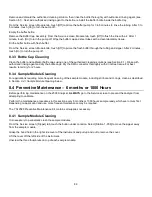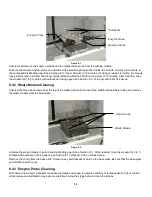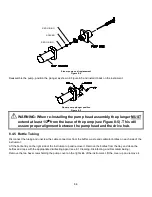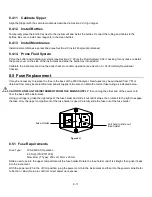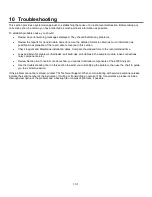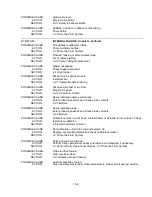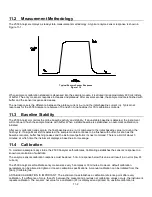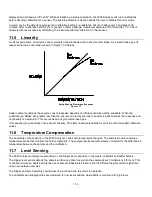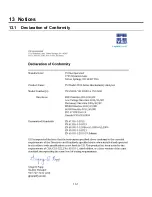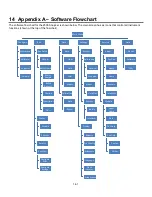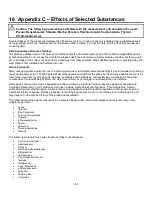
10-3
Sample Report (Brief)
Calibration Report (Brief)
=======================
=======================
Sample Results Report
Cal Report [2]
=======================
=======================
Batch: Test Batch-1
1A:Glucose
2.50 g/L
Analyte:
P96_A01
IB nA
3.24
-----------------------
NPL nA
17.63
1A:Glucose
4.82 g/L
NPL Shift
-0.64%
1B:Lactate
1.82 g/L
-----------------------
Fri 9/9/2018 10:59:37
1B:Lactate
0.50 g/L
=======================
IB nA
2.28
NPL nA
11.81
NPL Shift
0.47%
-----------------------
Fri 9/9/2018 10:59:37
=======================
IB nA
(Initial Baseline Current). The initial baseline current is monitored before a sample or calibration. The IB current
must be stable and below 6 nA.
NPL nA
(Net Plateau Current). This is the peak current minus the baseline current. The minimum acceptable plateau
current is 5 nA. The maximum plateau current allowed is 100 nA for calibrations and 625 nA for samples.
FB nA
(Final Baseline Current). The final baseline current is printed for calibrations and samples. The baseline current is
monitored during the buffer flush and compared to the initial baseline current.
IB shift
(Baseline Shift). The final and initial baselines are compared and reported as percent shift. A negative baseline
shift is not uncommon with newly-installed Membranes. High concentration samples may yield positive baseline shifts. An
excessive positive shift can be an indicator of the presence of an interfering substance. The message 'Final baseline error'
is printed when the instrument cannot adequately flush the sample module.
PL Slope
(Slope of the plateau). The slope is reported in nanoamps per minute. A newly installed membrane may have
an elevated plateau slope. An excessive slope can be an indicator of the presence of an interfering substance.
End Point
is the time from dispensing the sample into the sample module until the instrument reads the probe signal. The
default value for most chemistry setups is 30 seconds. The value that you have selected in Setup is displayed in the
report. Note: This is not through-put time, but rather best thought of as "reaction" time or "probe signal development" time.
NPL shift
(Calibration Shift). A calibration result is compared to the previous calibration result and the percent shift is
reported. The default setting is 2%. That is, if the shift is greater than 2%, the instrument performs another calibration.
Note that the 2500 Analyzer attempts to calibrate each sensor up to 5 times before aborting calibration for that sensor.
You may select Cal shift values that better suit your application. Excessive calibration shifts may be caused by faulty
membranes, newly installed membranes or air in the sample module.
Temperature
(Sample module Temperature). The sample module temperature is measured during a calibration and a
sample. The results of a sample are temperature corrected. The 2500 Analyzer works at sample module temperatures
between 15° and 35°C. The instrument only measures and displays temperatures between 10° and 50°C.
Summary of Contents for YSI 2500
Page 1: ...USER MANUAL 525021 YSI 2500 Biochemistry Analyzer OPERATIONS AND MAINTENANCE MANUAL...
Page 34: ...5 11 8 The Stat sample results are displayed on the Run Stat tab Stat sample results...
Page 88: ...13 1 13 Notices Declaration of Conformity 13 1...
Page 96: ...17 1 17 Appendix D Line Power Cord and Plug Wiring United Kingdom United States Europe...



